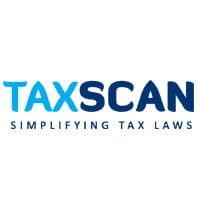Depreciation can be Calculated on Intangible Assets: Delhi HC upholds Depreciation Claim as allowed by CIT(A) [Read Order]
Since the expenditure was incurred towards depreciable assets, the CIT(A) allowed 25% of the said amount as depreciation

Delhi High Court – Depreciation on Intangible Assets – Commissioner of Income Tax – taxscan
Delhi High Court – Depreciation on Intangible Assets – Commissioner of Income Tax – taxscan
The Delhi High Court observed that the Depreciation can be calculated on Intangible Assets and also upheld the Depreciation claim as allowed by Commissioner of Income Tax (Appeals) [CIT(A)].
The Present Appeal was filed by the Revenue impugning and order passed by the Income Tax Appellate Tribunal (ITAT) (hereafter the Tribunal) ITA No. 3378/Del/2010, captioned with the DCIT, Circle-11(1), New Delhi v. eSys Information Technologies Ltd. in respect of assessment year (hereafter AY) 2004-05.
Boost Your Business with SME IPO Funding Strategies - Enroll Now
In the Present Case the Respondent, Esys Information Technologies Ltd were represented by Ms. Prem Lata Bansal, Sr. Advocate with Mr. Sumit Batra and Mr. Shivang Bansal, Advocates.
The Impugned order is a common order passed by the Tribunal in two appeals in respect of AYs 2004-05 and 2005-06. But the present appeal deals with the Revenues appeal in respect of AY 2004-05.
The first controversy related to the case involved the disallowance of an amount of Rs. 34,63,450/- on account of goodwill that was written off by the assessee during the relevant previous year. The second controversy pertained to the addition made regarding the arm's length price (ALP) with related enterprises. The Revenue’s grievance concerning the calculation of ALP was specifically focused on the associated enterprise "eSys Singapore" (the Foreign AE) being considered as one of the tested parties.
Boost Your Business with SME IPO Funding Strategies - Enroll Now
Court framed various questions on the basis and is taken into consideration. Regarding the First Question, it is said that the issue is related to the Foreign AE which is admittedly one of the associated enterprises - was treated as one of the tested parties.
Mr. Vipul Agrawal, the Senior Standing Counsel, along with Mr. Gibran Naushad and Ms. Sakshi Shairwal, the Junior Standing Counsels, representing the Revenue, stated that it was not appropriate to use the specified entity as a tested party, given that the financials and functions of the Foreign Associated Enterprise were more complex compared to those of the assessee.
They accepted that this question did not arise in the context of the present facts because the Foreign Associated Enterprise was not included as one of the tested parties for determining the Arm's Length Price.
Boost Your Business with SME IPO Funding Strategies - Enroll Now
It was noted that, although the assessee had proposed the inclusion of the Foreign Associated Enterprise as a tested party, this proposal was rejected by the Transfer Pricing Officer. Consequently, it was held that the addition made on account of the Arm's Length Price adjustment was not due to the inclusion of the Foreign AE as a tested party. Therefore, since the Foreign AE was not included as one of the tested parties and this was also accepted, the questions raised by the Revenue could be dismissed.
The Second question to be addressed is related to the disallowance of Rs.34,63,450/-, which was written off by the assessee as goodwill. According to the details the undisputed facts are that the assessee had paid a sum of Rs.47,00,000/- to M/s Nebula Technologies Pvt Ltd for purchasing certain assets, which were located in different places in India.
Boost Your Business with SME IPO Funding Strategies - Enroll Now
The Assets were valued at Rs.12,37,450/- and there is no dispute raised regarding this valuation of the assets and the assessee had treated the balance amount of ₹34,63,450/- paid to Nebula as goodwill.
The assessee claimed that it had not acquired any benefit from the amount in question and had accordingly written off the goodwill in its books of accounts. However, the Assessing Officer (AO) rejected this claim and added a sum of ₹34,63,450/- as income chargeable to tax. He reasoned that the amount was not wholly and exclusively expended for the purposes of business and, therefore, was not allowable under Section 37(1) of the Income Tax Act, 1961.
The Assessee hereafter appealed before the Commissioner of Income Tax (Appeals) (CIT(A)) on the said decision. The CIT(A) held that there was no dispute regarding the fact that the amount of ₹47,00,000/- had been spent on the acquisition of assets intended for business purposes.
Boost Your Business with SME IPO Funding Strategies - Enroll Now
Accordingly, the CIT(A) held that the assessee was entitled to charge depreciation on the said asset for the reason that even intangible assets could be treated as depreciable assets. Also since the expenditure was incurred towards depreciable assets, CIT(A) allowed 25% of the said amount as depreciation.
The Tribunal declined to interfere with the decision of the CIT(A) by following the decision of the Supreme Court in Commissioner of Income Tax, Kolkata v. Smifs Securities Ltd.: (2012) 348 ITR 302 whereby the SC held that the goodwill could be considered as an intangible asset eligible for depreciation. The Revenue failed to raise dispute in regarding the proposition given in the case, intangible assets may also be eligible for depreciation.
The Division Bench, which included Justice Vibhu Bakhru and Justice Swarana Kanata Sharma, noted that the Assessing Officer had completely disallowed the goodwill written off, arguing that it was not incurred wholly and exclusively for business purposes. However, they pointed out that there was no dispute regarding the ₹47,00,000 paid for the acquisition of assets of Nebula, and there was no indication that this amount was allocated for any other consideration or purpose.
Boost Your Business with SME IPO Funding Strategies - Enroll Now
It was concluded that the entire amount of ₹47,00,000 should be regarded as expenditure related to the acquisition of assets. Given that the acquired assets were valued at ₹12,37,450, there was no issue in categorizing the remaining amount as an intangible asset. Therefore, the decision of the CIT(A) to permit depreciation on these intangibles was deemed justifiable.
In light of the above, it was stated that the second question, as formulated, was answered against the Revenue and in favor of the assessee.
The Present appeal was also disposed of on the aforesaid terms.
To Read the full text of the Order CLICK HERE
Support our journalism by subscribing to Taxscan premium. Follow us on Telegram for quick updates


